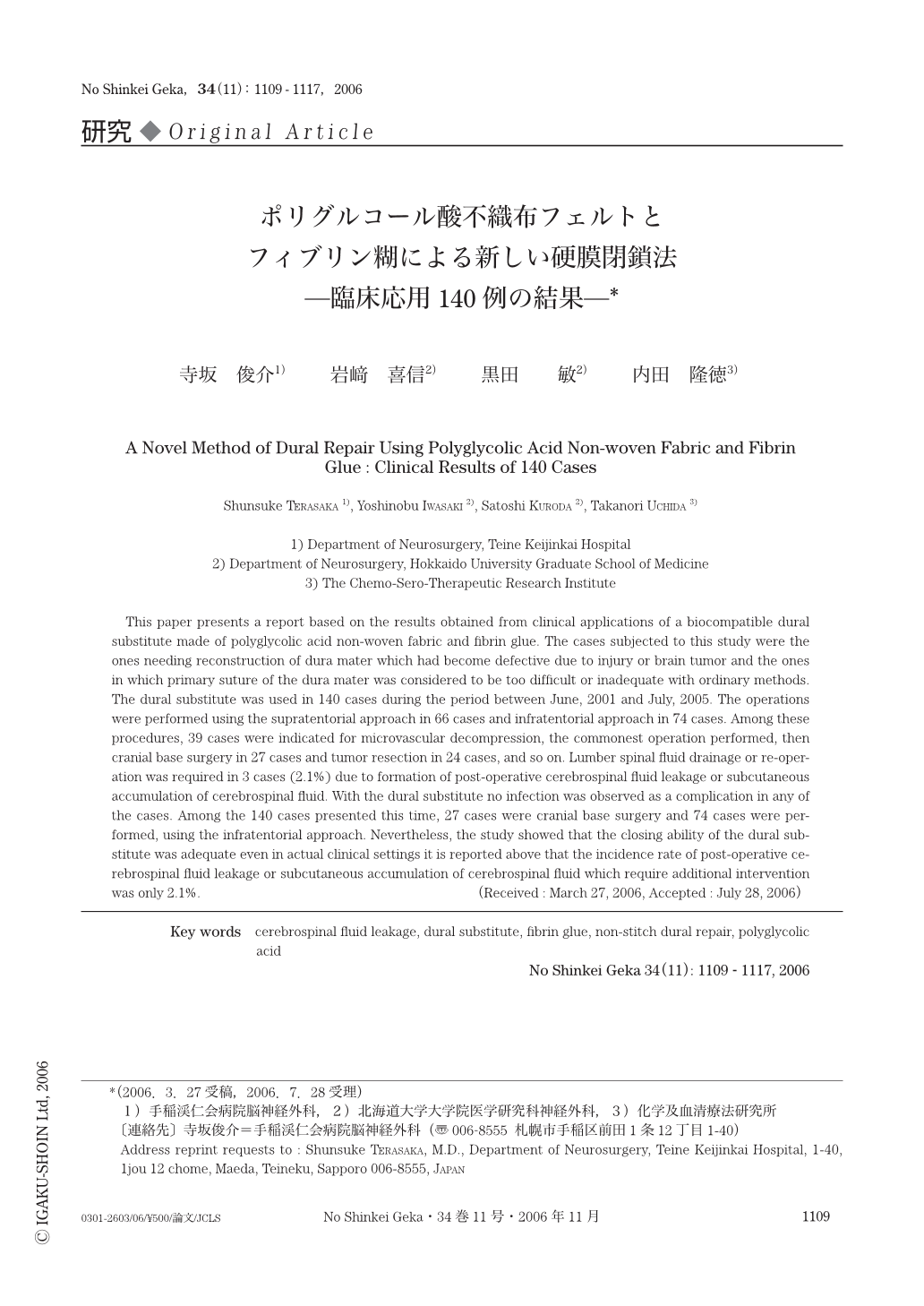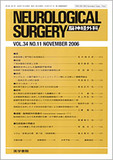Japanese
English
- 有料閲覧
- Abstract 文献概要
- 1ページ目 Look Inside
- 参考文献 Reference
Ⅰ.は じ め に
脳神経外科の手術では硬膜欠損や硬膜縫合不全が生じる場合が少なからず存在する.硬膜欠損は外傷や髄膜腫の手術のみならず,外減圧術や頭蓋底手術でも起こりうる.また硬膜縫合不全は,高齢者の後頭蓋窩の手術や内視鏡手術などで硬膜の一次縫合ができない場合に起こりうる.このような場合に髄液漏やそれに引き続く感染,脳の陥頓による様々な合併症を防ぐ目的で代用硬膜が必要になる.
われわれは2006年に生体組織に置換される代用硬膜としてポリグルコール酸不織布フェルト(PGAフェルト)とフィブリン糊との組み合わせを報告した16).この生体適合性代用硬膜は硬膜としての高い閉鎖能や膠原線維への組織置換という特徴以外に,不織布ゆえ硬膜閉鎖に縫合操作を要しないという特徴をもっていた.髄液漏が縫合操作に制限が起こる部位で起こりやすいことを考えると,この代用硬膜の特徴は硬膜閉鎖には極めて有利に働くと考えられた.
今回われわれは,臨床上の様々な硬膜欠損や硬膜縫合不全に対する本代用硬膜の臨床応用例を報告する.
This paper presents a report based on the results obtained from clinical applications of a biocompatible dural substitute made of polyglycolic acid non-woven fabric and fibrin glue. The cases subjected to this study were the ones needing reconstruction of dura mater which had become defective due to injury or brain tumor and the ones in which primary suture of the dura mater was considered to be too difficult or inadequate with ordinary methods. The dural substitute was used in 140 cases during the period between June,2001 and July,2005. The operations were performed using the supratentorial approach in 66 cases and infratentorial approach in 74 cases. Among these procedures,39 cases were indicated for microvascular decompression,the commonest operation performed,then cranial base surgery in 27 cases and tumor resection in 24 cases,and so on. Lumber spinal fluid drainage or re-operation was required in 3 cases (2.1%) due to formation of post-operative cerebrospinal fluid leakage or subcutaneous accumulation of cerebrospinal fluid. With the dural substitute no infection was observed as a complication in any of the cases. Among the 140 cases presented this time,27 cases were cranial base surgery and 74 cases were performed,using the infratentorial approach. Nevertheless,the study showed that the closing ability of the dural substitute was adequate even in actual clinical settings it is reported above that the incidence rate of post-operative cerebrospinal fluid leakage or subcutaneous accumulation of cerebrospinal fluid which require additional intervention was only 2.1%.

Copyright © 2006, Igaku-Shoin Ltd. All rights reserved.


